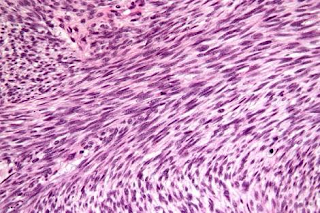The international team of researchers analyzed complete screens of genes and genetic material in malignant peripheral nerve sheath tumors (MPNSTs), and discsovered unknown genetic information about the disease. Researchers show a gene called Lats1/2 suppresses cancer, and losing the gene’s expression reprograms cells so they rapidly expand and become cancerous.
Loss of Lats1/2 also causes other genes in the HIPPO signaling pathway (which controls tissue growth) to become hyperactive. These hyperactive genes and their associated proteins (TAZ and YAP) then work with the protein TEAD1 to activate molecular cancer programs that form MPNSTs.
When researchers disrupted overactive TAZ-YAP in mice bred to lack Lats1/2, they also blocked signaling from PDGF (platelet-derived growth factor receptor), which supports tissue growth. These steps reduced the size and number of MPNSTs in the mice. They also inhibited the growth of human MPNST cells in laboratory cultures.
MPNST’s develop in what are called Schwann cells. These cells form the myelin sheath. The myelin sheath functions as a protective insulation around peripheral nerves, which connect the brain and spinal cord to extremities and organs and promote transmission of nerve impulses. About half of MPNSTs are linked to mutation of the NF1 gene, which causes a condition called Neurofibromatosis 1.
The other half of MPNSTs have no known genetic origins, and a small proportion of cases can be caused by radiotherapy given to people for cancer treatment. The NF1 gene normally helps control a balanced rate of cell growth. When it mutates, it can cause brown spots on a person or benign tumors along peripheral nerves.
In some cases, NF1 mutation can lead to cases of runaway cell growth, creating very large and sometimes medically problematic plexiform tumors which can turn into MPNSTs. MPNSTs are biologically aggressive tumors and resistant to treatments like chemo and radiation therapy. They’re also known for high relapse rates and poor prognosis, often leading to death.
haleplushearty.blogspot.com


